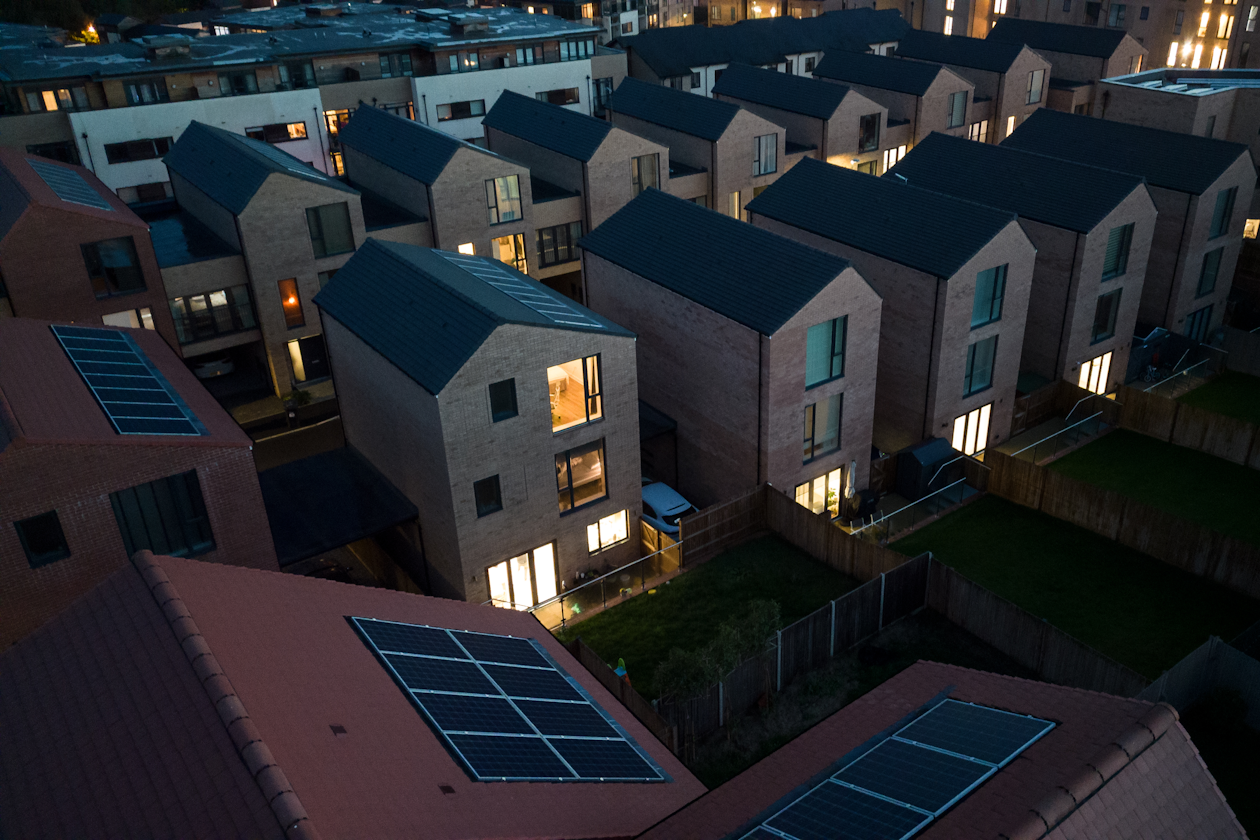UK house price growth flattened out month-on-month in June following a small monthly dip in May, according to an index.
Halifax recorded a 0.0% month-on-month change in typical UK property values in June, following a 0.3% fall in May.
It said the housing market’s resilience “continues to stand out” following stamp duty changes that came into force from April when discounts on the charge, which applies in England and Northern Ireland, became less generous for some home buyers.
Amanda Bryden, head of mortgages at Halifax, said: “The UK housing market remained steady in June, with the average property price effectively unchanged over the month, following a slight drop of 0.3% in May.
“At £296,665, the average house price is still around 2.5% higher than this time last year.
“The market’s resilience continues to stand out and, after a brief slowdown following the spring stamp duty changes, mortgage approvals and property transactions have both picked up, with more buyers returning to the market.
“That’s being helped by a few key factors: wages are still rising, which is easing some of the pressure on affordability, and interest rates have stabilised in recent months, giving people more confidence to plan ahead.
“Lenders have also responded to new regulatory guidance by taking a more flexible approach to affordability assessments.”
Ms Bryden said that over the past two months: “We’ve already helped an additional 3,000 buyers – including more than 1,000 first-time buyers – access a mortgage they wouldn’t have qualified for before.”
She added: “With markets pricing in two more rate cuts from the Bank of England by year end, and the average rate on newly drawn mortgages now at its lowest since 2023, we continue to expect modest house price growth in the second half of the year.”
Tom Bill, head of UK residential research at Knight Frank said: “House prices may have held steady, but high supply and weak demand suggest this is not the start of a rebound.”
He added: “Supply is higher following the stamp duty cliff-edge in March and as more landlords sell, but consumer confidence remains weak after economic activity was pulled forward into the first quarter of the year.
“We expect modest single-digit house price growth in 2025 as rates come down in the second half of the year but asking prices need to reflect the fact it is very much a buyer’s market.”
Another recent report from Nationwide Building Society indicated that the average house price dipped by 0.8% month-on-month in June.
Karen Noye, a mortgage expert at wealth manager Quilter said: “Today’s house price index looks a little more positive than other indices already published which reported a fall in prices.”
She added: “With the summer holidays fast approaching, we could see a slowdown as trips abroad take precedence over moving home.
“The market is used to a dip in momentum during this time of the year but having already had a fairly slow start to 2025, we could see this lull push house prices down a little more.
“However, while we may not see activity pick up until nearer the autumn – by that time the stamp duty changes will have sunk in – buyers will have no choice but to adjust to the new norm if they wish to move home, and we could see the market pick up some pace as a result.”
Sarah Coles, head of personal finance, Hargreaves Lansdown said: “A major problem is that homes have become so expensive that it’s pushing affordability to the limit.
“While mortgage rates have fallen, they’re not dropping particularly fast and remain much higher than we have been used to in the previous few years.
“It’s one reason why property sales are stronger in parts of the country where prices tend to be lower.
“Lenders have reacted to higher house prices by offering more flexibility over how much people can borrow.”
Ms Coles said that for first-time buyers: “It’s worth considering whether you can get any help building your deposit, whether that’s through family and friends or the 25% boost from the Government through the Lifetime Isa.”
Iain McKenzie, chief executive of the Guild of Property Professionals, said: “We’re seeing a noticeable uplift in buyer and seller confidence, supported by falling mortgage rates and greater choice in the market.
“With dozens of mortgage deals now available below 4%, affordability is improving.”
Jason Tebb, president of OnTheMarket, said: “Recent (Bank of England) base rate cuts have been fundamental in boosting confidence and activity.
“Further rate reductions from the Bank of England will provide much-needed stimulus for the market and boost buyer and seller confidence as the year progresses.”
Here are average house prices and the annual increase, according to Halifax (regional annual change figures are based on the most recent three months of approved mortgage transaction data):
East Midlands, £244,644, 2.5%
Eastern England, £334,795, 1.8%
London, £540,048, 0.6%
North East, £175,679, 2.0%
North West, £241,938, 4.4%
Northern Ireland, £212,189, 9.6%
Scotland, £214,891, 4.9%
South East, £389,069, 1.1%
South West, £303,271, 0.5%
Wales, £229,622, 3.9%
West Midlands, £260,394, 2.9%
Yorkshire and the Humber, £215,525, 4.2%
This article was written by Vicky Shaw and PA Personal Finance Correspondent from Press Association and was legally licensed through the DiveMarketplace by Industry Dive. Please direct all licensing questions to legal@industrydive.com.

